As climate change has made agriculture in India an uncertain and risky proposition, it is necessary to adopt a holistic approach that makes crops resilient to climate change, and provides income support and a safety net against farm losses.
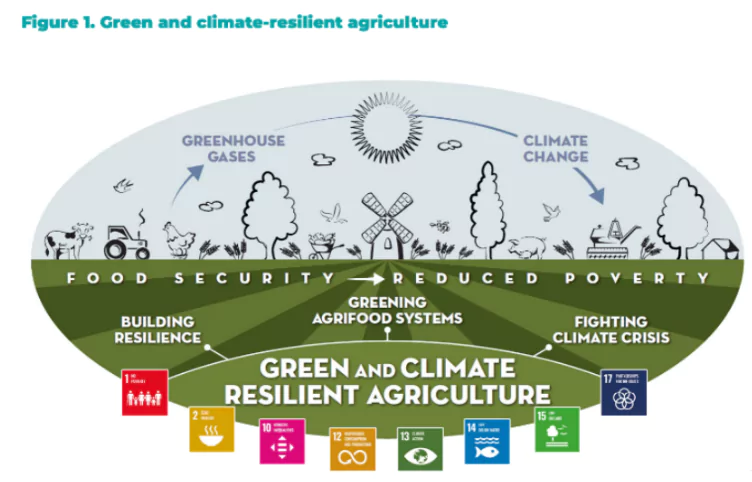
About Adaptive Agriculture
Adaptive Agriculture is the belief that adaptation and creativity are the essential qualities required to grow healthy food.
- It utilises a broad spectrum of strategies and skill-sets for growing food responsibly.
- It acknowledges the need for individuals to develop and grow their own healthy personal relationships with all aspects of food production.
Enroll now for UPSC Online Course
Various Actions taken by India for Climate Resilient Agriculture
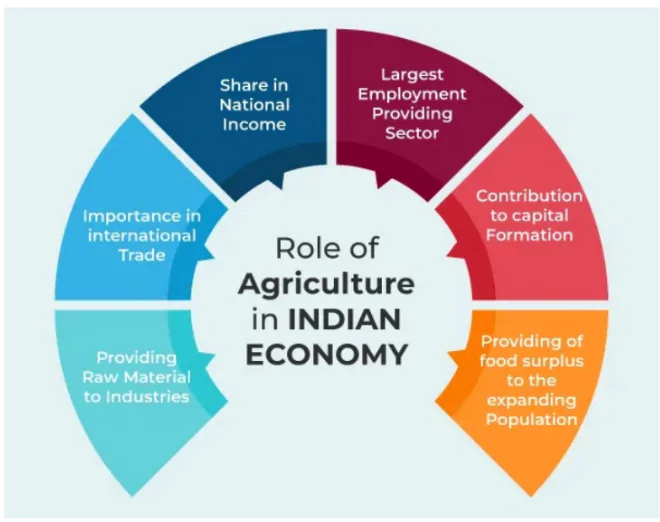
Agriculture employs 42.3% of the country’s population and has a share of 18.2% in its GDP. Following actions have been taken in order to promote Climate Resilient Agriculture in India:
- National Initiative on Climate Resilient Agriculture (NICRA): In 2011, India launched NICRA, its first programme to enhance climate resilience of agriculture.
- It was launched in 151 villages across the country for technology demonstration.
- Project on Climate Resilient Agriculture (POCRA): Based on the principles of NICRA, Maharashtra launched POCRA.
- It aims to enhance the resilience of 1.9 million farmers and 2.6 million ha in 16 rainfed, drought-prone, farmer-suicide prone, salinity-affected districts in the first phase from 2018 to 2024.
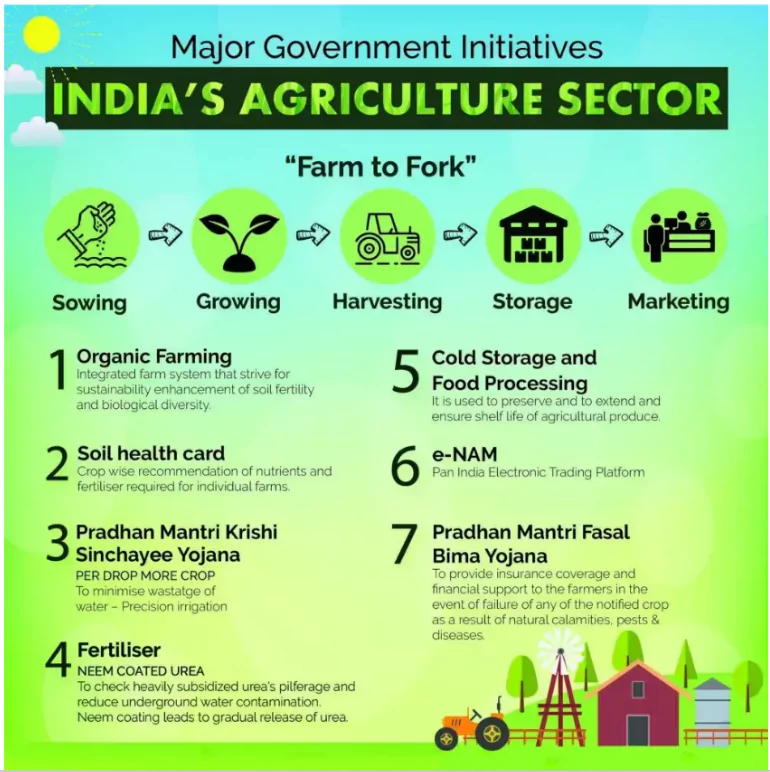 With a budget of Rs 4,000 crore, 70% of which is received as a loan from the World Bank and is announced as the biggest climate-resilient agriculture project in India.
With a budget of Rs 4,000 crore, 70% of which is received as a loan from the World Bank and is announced as the biggest climate-resilient agriculture project in India. - The government established a separate unit to implement POCRA to focus on:
- interventions related to water security,
- protected cultivation in shade-houses,
- promotion of agri-enterprises like sericulture and agribusiness activities to strengthen value chains,
- by providing subsidies to farmers through Direct Benefit Transfer (DBT).
- Research Program on Climate Change, Agriculture, and Food Security (CCAFS): It was implemented in 2010 on a pilot basis in Bihar, Haryana, Punjab, Maharashtra, Telangana and Madhya Pradesh for large-scale intervention on climate-smart agriculture.
- Concern: Dependence on harmful herbicides
- Need for: Research published in 2018 in Cahiers Agricultures shows that environmental and social safeguards are necessary to ensure climate-smart agriculture conforms to principles of sustainability.
- Organic and Natural Farming: Both the Union and state governments have implemented schemes such as:
- Paramparagat Krishi Vikas Yojana (PKVY): It was launched in 2015 to support and promote organic farming, which will improve soil health.
- It is an extended component of Soil Health Management (SHM) under the Centrally Sponsored Scheme (CSS), National Mission on Sustainable Agriculture (NMSA).
- Mission Organic Value Chain Development for North East Region: It is a Central Sector Scheme, a sub-mission under National Mission for Sustainable Agriculture (NMSA) to develop end to end organic value chains in North Eastern States.
- National Mission on Natural Farming: It is a separate scheme formulated by the Indian government in 2023-2024 to promote natural farming across the country.
- The NMNF aims to increase agricultural productivity and incomes, build resilience to climate change, and reduce greenhouse gas emissions.
- The mission will cover 7.5 lakh hectares by developing 15,000 clusters.
- Andhra Pradesh Community Managed Natural Farming (APCNF): It involves growing diverse crops in all three seasons, covering the soil with crop residue mulch, minimal tillage of soil and non-use of synthetic fertilisers.
- APCNF is the largest such programme in India and also the largest worldwide in terms of farmers enrolled.
- Crop diversity ensures that farmers gain from some crops even if the others fail.
- Bio-Input Resource Centres: These centres being set up under the National Mission on Natural Farming, making the organic and bio-inputs readily available to farmers.
- The Union budget for 2024-25 reiterates the setting up of 10,000 bio-input resource centres. It also announces the inclusion of 10 million farmers in natural farming in the next two years, supported by certification and branding.
- Farmer Producer Organisations (FPOs): Both the Union and state governments have been promoting formation of FPOs. In 2020, a scheme was implemented to establish and promote 10,000 FPOs by 2027-28, with a budget of Rs 6,865 crore.
- The Union agriculture ministry released its draft National Policy on Farmer Producer Organisations put up for public comment in June 2024.
- In 2023, the Union Ministry of Cooperation launched National Cooperative Organics Limited (NCOL) to bolster the marketing of organic produce through cooperatives.
- It has also launched a brand, “Bharat Organics”, and aims to share up to 50% of profits with farmers.
Challenges Faced by Indian Agriculture
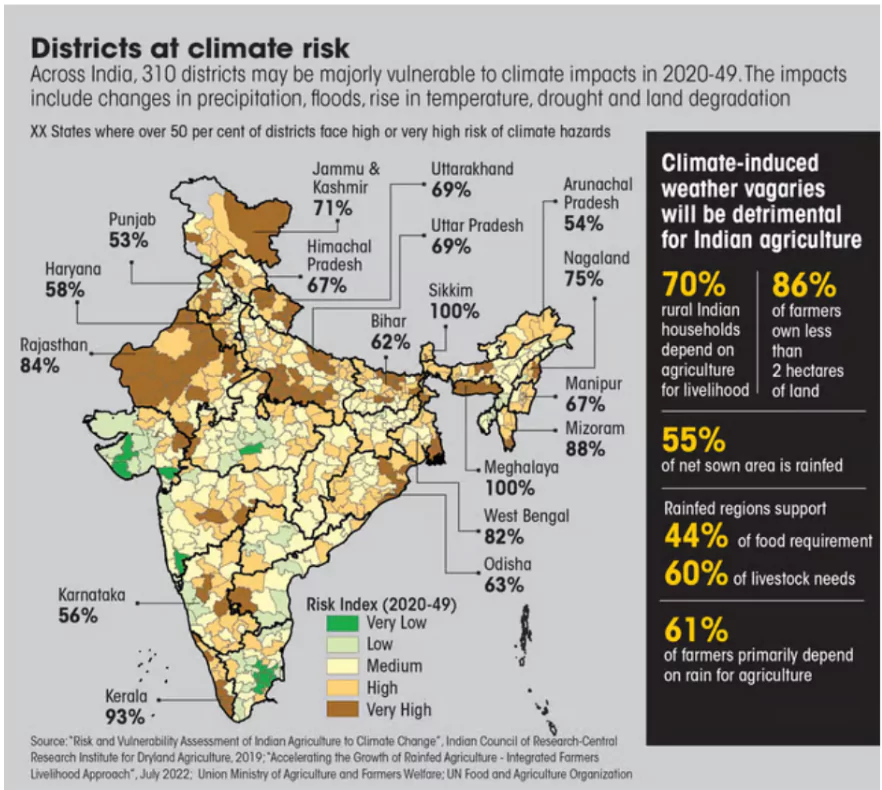
Recently, the UN secretary general said that earth is entering the era of “global boiling”. In the last couple of years, there have been massive crop losses due to erratic and extreme weather conditions.
- Severe Impact of Climate Change: As per a recent study by Indian Council of Agricultural Research (ICAR), 90% of the districts face climate risks and 54% of districts face “high” and “very high” climate risk .
- Contributing Factors:
- Rise in minimum temperature
- High frequency of droughts,
- Low access to irrigation and
- cyclones
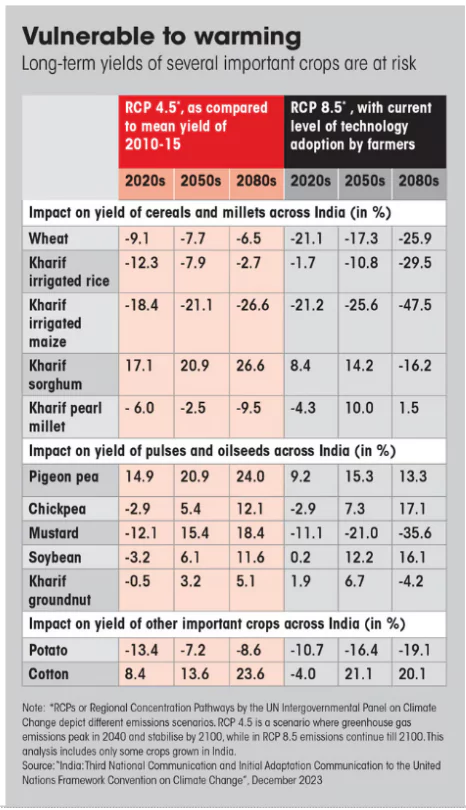 Large-Scale Crop Losses: These losses are triggered by unpredictable and extreme weather.
Large-Scale Crop Losses: These losses are triggered by unpredictable and extreme weather.
- India suffers a food loss of about Rs. 1.53 trillion (USD 18.5 billion) every year as per the latest large-scale study conducted by NABCONs during 2020 to 2022.
- Impact on Food Security: 55% of India’s net sown area is watered by rain or not watered at all.
- These rainfed regions, as per a 2022 report by the Union Ministry of Agriculture and Farmers Welfare, meet 44% of the country’s food requirement and support 60% of the livestock.
- This means, a substantial part of the country’s food security and the livelihood of 61% farmers depends on the arrival of rain and its amount.
- Organic and Natural Farming: Upscaling of organic and natural farming has been slow due to adoption challenges. As per government data, till March 2023, combined organic area stands at 4.2% of the net sown area of the country, while organic farmers comprise 3% of the 146 million agricultural landholders.
- Often, farmers find it difficult to prepare organic and bio-inputs due to lack of knowledge and availability of inputs, and due to the time and labour needed for it.
- Insurance: In the past eight years of its implementation, 568 million farmers have been enrolled and 232.2 million farmers have received claims.
- Around 70% of the gross cropped area in India is not covered under insurance, leaving it unprotected.
- Criteria: All disasters are not considered, the Union government has notified only 12 disasters for providing relief and the relief that is provided to farmers, where crop loss is 33% or above.
- Calamities such as unseasonal change in climate and heatwave, are not notified as disasters under the National Disaster Management Fund of the Centre.
- Farmer Producer Organisations (FPOs): These farmers produce 70% of vegetables and over 50% of fruits and cereals but face challenges in marketing their produce due to lengthy supply chains, poor value addition and lack of economies of scale.
- Human Capital: Despite their potential, FPOs face challenges like inadequate working capital, lack of human resources with business acumen and regulatory compliance.
- Loan Availability: Banks hesitate to offer loans to FPOs due to farmers’ low collateral power.
- Promotion of Weedicides: Weedicides like glyphosate is a serious cause of concern, as POCRA has aggressively promoted practices like zero tillage.
Check Out UPSC CSE Books From PW Store
Approach that Need to be Adopted
- More Focus on Organic and Natural Farming: These are considered the holistic approach to climate adaptation.
- These methods are more productive and profitable by considering all costs and benefits, including health and environmental services related to soil, water, energy, biodiversity, carbon sequestration, mitigation and adaptation to climate change.
- It Increases water-holding capacity and allows roots of crops to go deeper and absorb more nutrients.
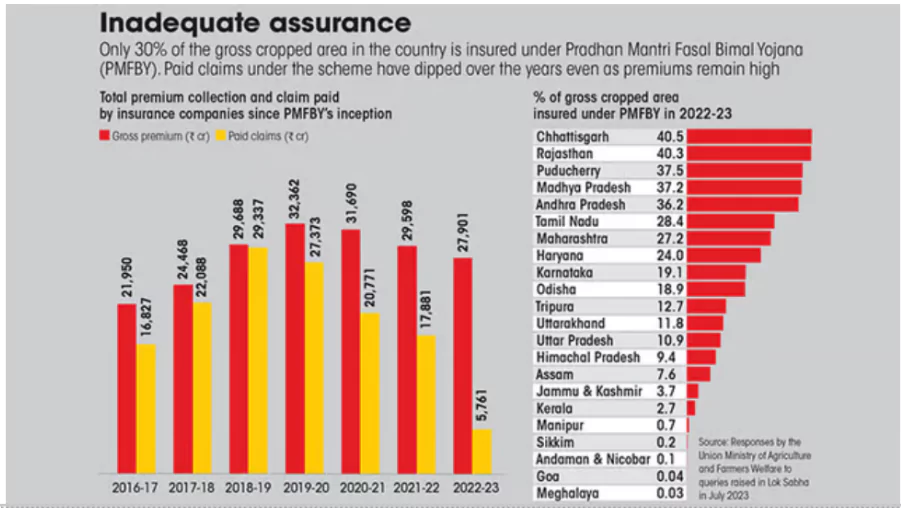 Inclusive Insurance Scheme: Crop insurance can become popular among farmers, if the insurance unit is made at farmer level instead of village level and farmers are able to choose from all available insurance companies. It will increase competition among companies.
Inclusive Insurance Scheme: Crop insurance can become popular among farmers, if the insurance unit is made at farmer level instead of village level and farmers are able to choose from all available insurance companies. It will increase competition among companies.
- India has the world’s biggest crop insurance scheme, Pradhan Mantri Fasal Bima Yojana (PMFBY), in terms of the number of farmers covered. PMFBY is implemented by five public sector and 15 private insurance companies.
- To access the insurance benefits offered by this program, farmers need to contribute a small portion of actuarial premiums.
- The contribution rates differ based on the type of crops: for Kharif crops (2%), Rabi crops (1.5%), Commercial crops (5%), and Horticultural crops (5%).
- However, the bulk of the actuarial premium, ranging from 95% to 98.5%, is covered jointly by both the state and central governments, with the costs shared equally on a 1:1 ratio.
- Reliable Forecast: Farmers need reliable weather forecast-based agro-advisories. As per the India Meteorological Department (IMD), agro-advisories reach an estimated 27 million farmers, which is only 18% of the 146.45 million farm households.
- There is significant variation in weather within the block and even within a panchayat. So farmers should be provided forecasts at panchayat level.
- Rational Adoption: Demand for climate-friendly food will grow if the consumer is aware about diverse foods which are not only good for health but also benefit the environment and climate.
- More Better Governance: Sustainable agriculture enhances the resilience of both farmers and farming, while FPOs can be an important vehicle for promoting them.
-
- The role of FPOs is particularly important in India’s agricultural sector, which is dominated by small and marginal farmers.
- NICRA: At the 15th high-level monitoring committee meeting, officials highlighted a need to prioritise research, upscale climate-resilient technologies and develop a methodology to assess the resilience potential of villages due to different technologies.
- Market Connectivity: Apart from FPOs, the government can play a key role in connecting organic farmers to markets. States like Karnataka, Odisha and Uttarakhand already procure organic produce and link it with the public distribution system and the Integrated Child Development Scheme.
- Minimum Support Price (MSP) for all Crops: It is desirable to ensure that farmers get assured prices for their produce.
- As the current MSP system, which primarily supports wheat and rice, promotes monoculture, strains water resources, and reduces crop diversity which impacts farmer’s resilience.
- Proactive Steps: Some states have already taken proactive actions such as:
- Haryana’s “Mera Pani Meri Virasat” scheme incentivises crop diversification and has a provision to procure diversified produce under MSP.
- Odisha’s Millet Mission, which aims for nutritional security and sustainable agriculture, promotes millet cultivation with incentives and procurement guarantee.
- Karnataka’s Raitha Siri promotes millets, pulses and oilseeds through incentives and procurement support, with an emphasis on organic farming.
Enroll now for UPSC Online Classes
Conclusion
Economic Survey 2023-24 clearly highlights that erratic monsoon, climate change, crop disease doubled food inflation in three years. Adapting to the climate impact on agriculture is therefore critical not for farmers’ livelihoods but for the food and nutritional security of the entire country.
![]() 20 Aug 2024
20 Aug 2024
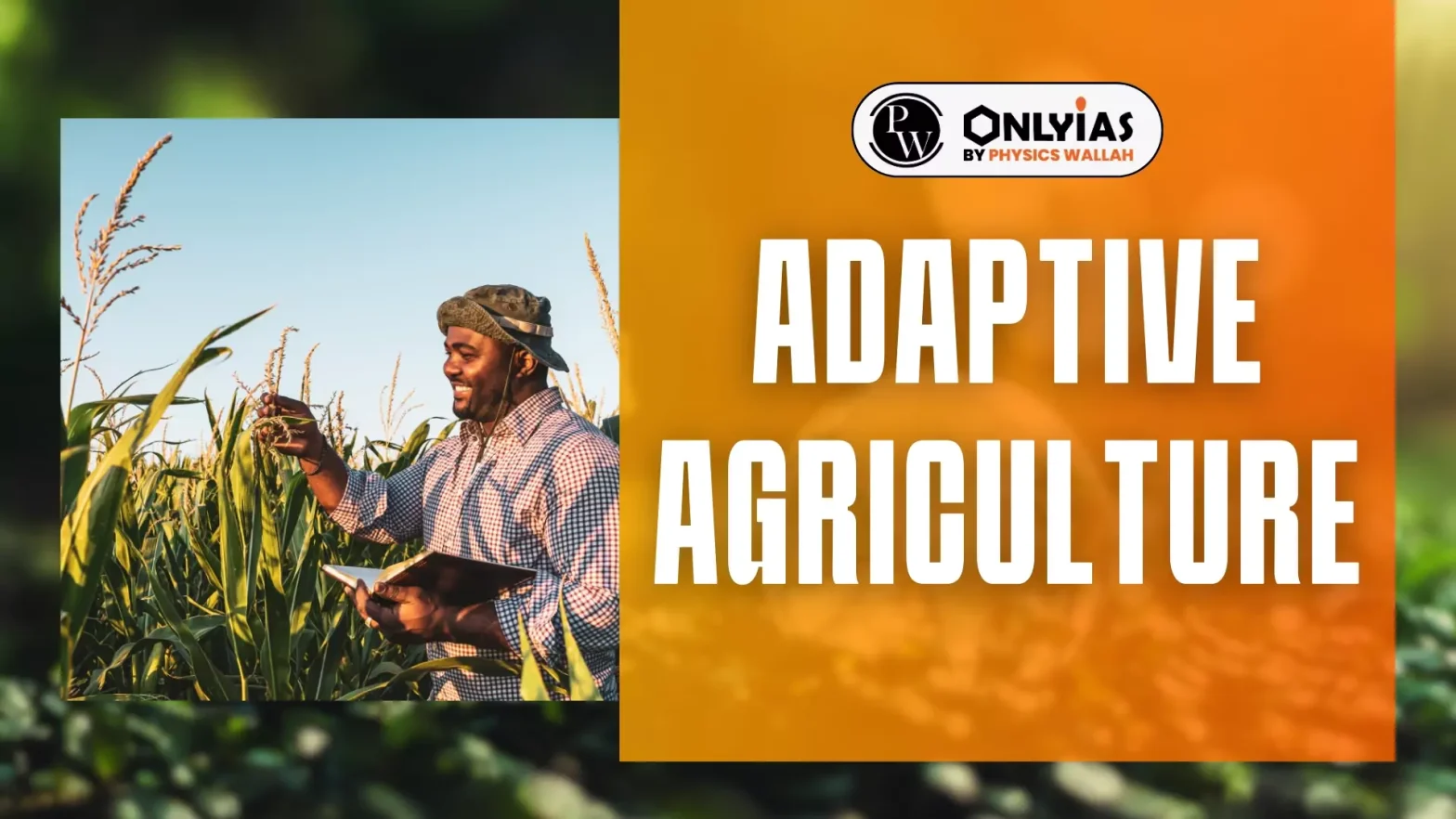


 With a budget of Rs 4,000 crore, 70% of which is received as a loan from the World Bank and is announced as the biggest climate-resilient agriculture project in India.
With a budget of Rs 4,000 crore, 70% of which is received as a loan from the World Bank and is announced as the biggest climate-resilient agriculture project in India. 
 Large-Scale Crop Losses: These losses are triggered by unpredictable and extreme weather.
Large-Scale Crop Losses: These losses are triggered by unpredictable and extreme weather.
 Inclusive Insurance Scheme: Crop insurance can become popular among farmers, if the insurance unit is made at farmer level instead of village level and farmers are able to choose from all available insurance companies. It will increase competition among companies.
Inclusive Insurance Scheme: Crop insurance can become popular among farmers, if the insurance unit is made at farmer level instead of village level and farmers are able to choose from all available insurance companies. It will increase competition among companies.
